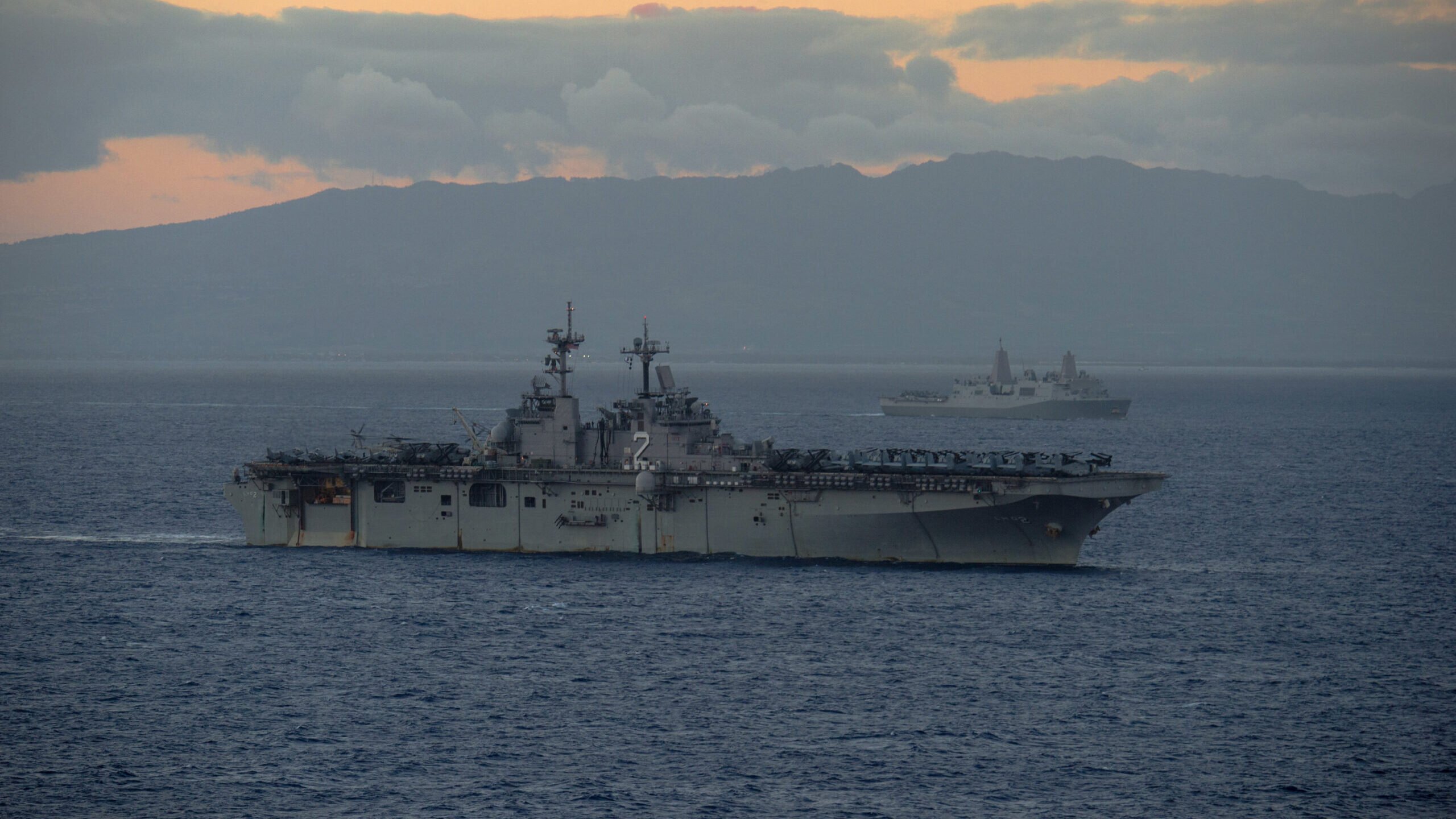
The Wasp-class amphibious assault ship USS Essex (LHD 2) and the San Antonio-class amphibious transport dock ship USS Anchorage (LPD 23) steam alongside off the coast of Hawaii. (U.S. Navy photo by Mass Communication Specialist 2nd Class Liam Kennedy)
WASHINGTON — Four of the last five Amphibious Ready Group-Marine Expeditionary Unit
deployments have failed to deploy on time, a Marine official recently told reporters.
The fifth ARG-MEU included in that statistic, featuring the Makin Island ARG and the 13th MEU, deployed on time, but even then one of its ships, the John P. Murtha (LPD-26), was forced to return to port shortly after leaving for repairs.
The admission of the repeated late deployments emerged late last week toward the end of the Modern Day Marine Exposition, where amphibious ship readiness and the Marine Corps’ currently lacking ship inventory had been a dominant topic for both industry and the service.
Read more of Breaking Defense’s coverage of the Modern Day Marine 2023 Exposition.
While speaking to reporters following his June 29 speech, Gen. Eric Smith, the Marine Corps’ assistant commandant and soon-to-be acting commandant, said the key metric the Marines use to judge amphibious ship readiness on a given day is whether they can deploy a three-ship ARG-MEU with all of its training completed and capabilities ready to go.
“Did they have their full amount of training days? Did they have their full integration period? And did they deploy together as an ARG-MEU? If they couldn’t do that [then] we have a readiness problem,” Smith said.
Smith initially told reporters a different statistic about how many ARG-MEU deployments have been delayed, but a Marine official later clarified the assistant commandant’s remarks.
Although much of the discussion for lawmakers this year has been centered on the Navy’s inventory of amphibious ships, readiness has become a more prominent factor both in the service’s messaging and in pending legislation.
Breaking Defense previously reported lacking amphibious ship readiness prevented the Marine Corps from offering a fully-equipped ARG-MEU to the combatant commander dealing with the crisis in Sudan earlier this year. The Marine official did not provide further details on which deployments the statistic included or the causes, but some delays have been reported publicly.
RELATED: Short On Amphibs For Turkey, Sudan, The Marines Grapple With Crisis Response Ethos
Separately, the Senate Armed Services Committee is advancing legislation that, if enacted into law, would require the Navy and Marine Corps to have at least 24 amphibious ships “operationally available” on any given day.
Sen. Tim Kaine, D-Va., the chairman of the panel’s seapower subcommittee, told reporters last month the 24 amphib figure was “a combination, I think of trying to make the best military judgment we could about what was needed together with the reality of finite budgetary resources and the importance of other programs.”
“What the commandant would tell you is it has got to be 31,” he said. “Recognizing budgetary realities because we have needs [for other ships and subs] … We decided what we want to shoot for is 31 with the expectation that 24 will be ready at any time and seven will be getting ready at any time with appropriate maintenance.”
Smith declined to comment on the Senate’s bill because the legislation has not yet been signed into law.






















